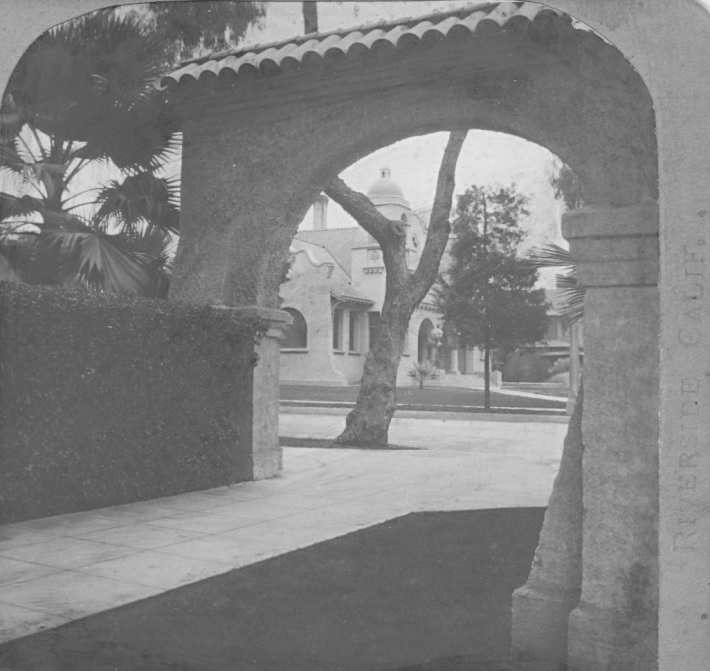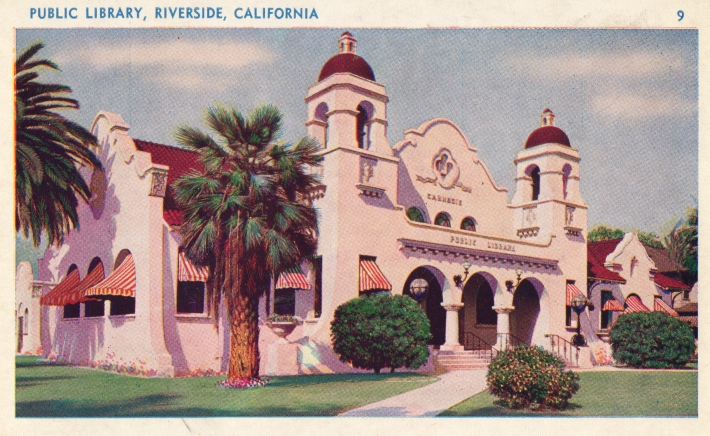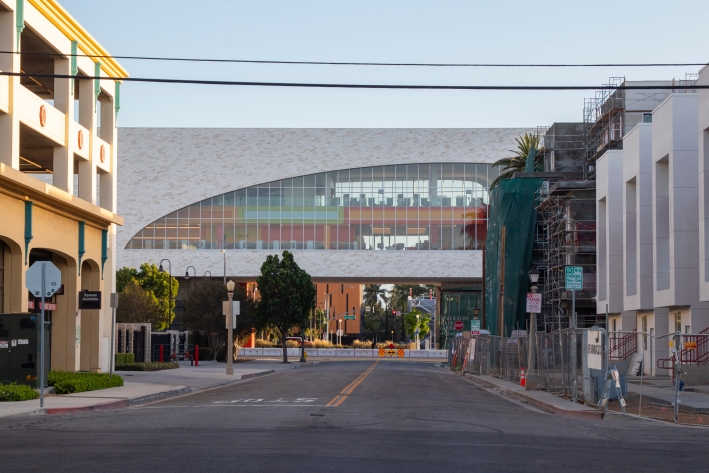🍊 Friday Gazette: July 18, 2025
One year after Hawarden, six artists join city residency and UCR soccer opens with Big Ten games.
Riverside's Public Library has come a long way from its origins in John W. North's parlor.

With all the excitement regarding the opening of the new Cheech Marin Center for Chicano Art and Culture of the Riverside Art Museum, much has been written in local Riverside circles concerning this fine collection of Chicano art and what it means for Riverside. What about the historical perspective on this museum, especially in regards to its location? The site on Seventh Street, now Mission Inn Avenue, has a long history in the chronicles of Riverside as the location of the main city library.
Riverside, embodied by its founder, John W. North, showed early support for a library. Soon after his own home was completed (on the site of present North Park, between the two old downtown railroad stations), he set aside his own parlor as a community reading room and donated his own books as a start for a public library. With the addition of other donated books, the library was moved to the back of the first school house in Riverside on Sixth Street.
In 1879 two prominent Riversiders, Elmer W. Holmes and Albert S. White (White Park is named after Albert), organized the Riverside Library Association and started a library subscription service. James Roe agreed to house the books in the back of his drugstore on Main Street, acting as librarian when not serving customers. In 1882, Roe sold his drugstore, but another druggist, John Hamilton, agreed to take the books to his drugstore near Eighth and Main Streets. Disaster struck on Sunday night, October 12, 1884, when a fire broke out in downtown Riverside. Residents came to help fight the fire and save the contents of many of the buildings. Most of the library books were saved and stacked in the middle of Main Street. The books were boxed and stored in private homes.
In 1888, Holmes was chosen as the city board president or mayor, and persuaded the members to establish a Library Board. Very quickly this new Board appointed Mary Montague Smith as the city’s first librarian. The widow of the late Reverend G. Smith of the First Congregational Church, she served for 12 years. Smith gathered the rescued books from the various homes and on June 1, 1889, opened the Riverside Public Library in two small rooms on the second floor of the Handy Building, on what is now University Avenue between Main and Orange. The library moved to its last temporary location in January 1890, when the collection moved to several rooms on the second floor of the Loring Building, at Main and Seventh Streets.
Beginning in late 1899, correspondence was sent to philanthropist Andrew Carnegie, seeking funds for a library building. After a number of letters, Lyman Evans wrote to Carnegie in mid-1901 outlining the city’s proposal and commitment. In August 1901, Carnegie’s secretary replied with a promise of $20,000 if the city provided a suitable site and promised annual support. A site was soon found at the northeast corner of Seventh and Orange, across from Frank Miller’s planned Mission Inn. The Los Angeles firm of Burnham and Blieser produced the design in the Moorish or Mission style of architecture, the same style as the First Church of Christ Scientist on Lemon and Sixth, and the style Miller planned for his new hotel.
On July 31, 1903, the first library building in Riverside was opened to the public. The main floor was divided by Moorish colonnades into a reading room, a reference area, book stacks and offices, the basement used for cataloguing and processing books. This building served as Riverside’s main library for the next 118 years.

The downtown library was expanded twice in the 1920s. In November 1920, the city purchased the Alatt and Humphrey houses east of the library for future extensions. In February 1922, a new reference wing designed by G. Stanley Wilson was built, and in 1930, the Humphrey house was remodeled as a children’s library. With these additions, the library now had the capacity to house 100,000 volumes.

By 1960, the downtown Carnegie Library was considered inadequate and overcrowded. In October 1961, a bond issue passed to fund a new library on the same block as the Carnegie Library building. Designed by the Riverside firm of Mosie-Harbach-Hewlett, ground was broken on June 25, 1963. The old library continued service as construction proceeded. In November and December of 1964, the collection of books was moved next door to the new facility and the old library was demolished. The dedication of the new library was on March 21, 1965.
The style of this new building was known as “New Formalism.” On the front of the building are interwoven screens depicting doves, a message of peace during the Cold War days of the 1960s.
For the next 56 years, this mid-century-style building would serve the people of Riverside as the Main Central Library.

years from the 1965 dedication to the present era. Riverside was again in need of a larger and more modern central library for downtown. Should the 1965 building be remodeled and possibly expanded? Should a new library be built on a different site? If so, where? With no consensus on these issues, decisions were put on hold. The bus depot site was considered a possibility. After plenty of debate and changes, the decision was made to relocate the downtown Central Library to the old bus depot site between University and Mission Inn Avenues, slightly west of Market. The old library building, on a site that had served the city for almost 115 years, now needed a new use. In 2017, Riverside’s then-city manager and the head of the Riverside Art Museum began talks with Cheech Marin concerning his collection of Chicano Art. The soon-to-be vacated library could become an art museum.
Progress was made on both buildings on their two sites. Ground was broken for the new library on March 18, 2019, with a grand opening on June 26, 2021.
Much has been written about both the new library and the newly opened Cheech Museum in the former library building. How successful the new library and the new Cheech Museum will be, history will have to tell. We do know that the site on Mission Inn Avenue served the city well for many decades. Now Riverside has two new art and cultural facilities to serve the community.
Let us email you Riverside's news and events every morning. For free!